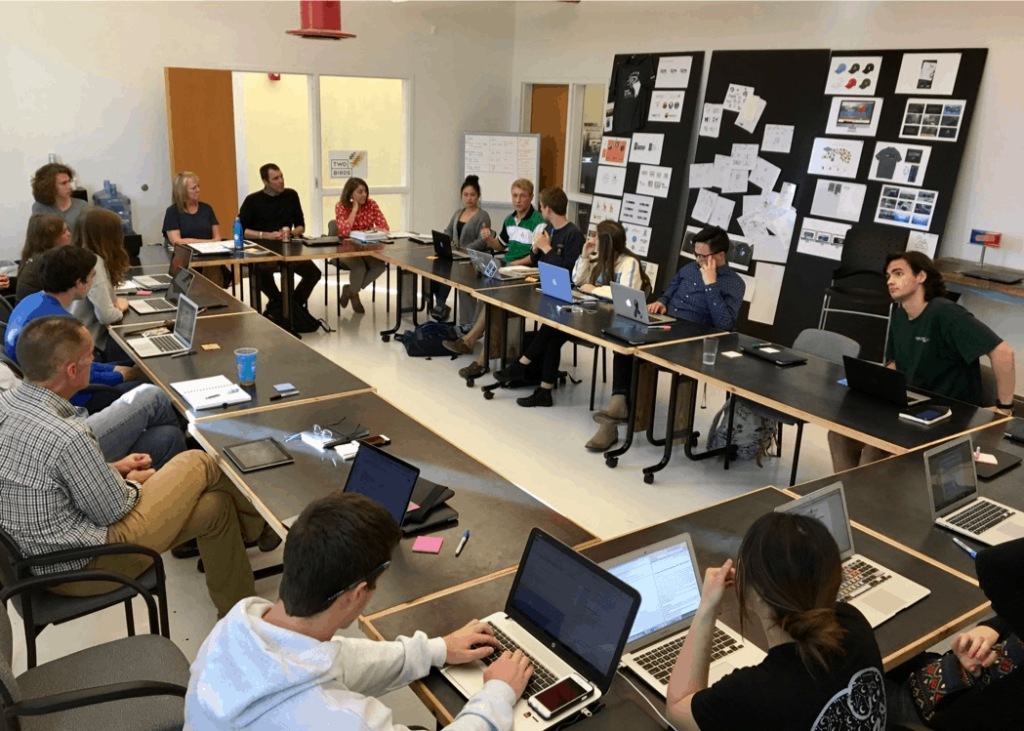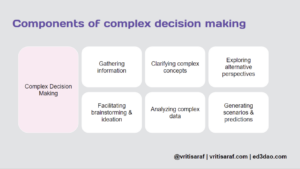Leaders Are Not the Chief Decider, They Are Decision Architects

When I was a public school superintendent, I decided that rather than building another large comprehensive high school, our district would open four business-connected career academies in the downtown corridor. It was a brilliant idea–better on every dimension: cheaper, faster, and bound to lead to better outcomes. We asked the community to approve a bond for the project and lost badly. The community made it clear–they wanted another comprehensive high school.
I thought, as President Bush famously said in 2006, “I’m the decider.” My community let me know that I was mistaken both about my role and my decision. The lesson was clear: you either give the community what it wants or create a learning process that leads to a new decision. As a leader, you’re not the chief decider, you’re the decision architect.
The last seven months have pressed education leaders to make hundreds of decisions under conditions they and their constituents have never experienced. District administrators have been preparing for challenges on multiple dimensions: academic, wellness, hygiene, human resources, logistics, technical, financial, and political. Each layer has been shifting with limited guidance, multiple opinions and emerging options, vendor delays, and policy constraints.
“Zooming in and out from the micro to the macro dimensions” of these layers of complexity has been “cognitively exhausting,” said one new superintendent.
If it ever made sense to lead a top-down organization as a chief decider, the complexity of our age (especially during a pandemic) suggests that time has passed. You simply can’t know enough about a dynamic context to make all the decisions and attempting to do so slows down the organization and makes it an oppressive place to work.
Michael Fullan just updated his best-seller, Leading in a Culture of Change, because systems have been “complexified with nonlinear change.” Writing a few months before the pandemic, his update rings true. He adds, “The more complex society gets the more sophisticated leadership must become.”
More Agreements and More Parties to the Agreements
Organizations (particularly public services) are layers of formal and informal agreements. The agreements are almost never enumerated or visible–not even to the operator. They are mostly inherited, often muddy, and sometimes inconsistent.
Growing complexity (and colliding crises) means more decisions and more agreements. And, future complicating the leadership challenge, it’s increasingly necessary to include more parties in the decision-making process.
In 2019, members of the Business Roundtable committed to “lead their companies for the benefit of all stakeholders – customers, employees, suppliers, communities and shareholders.”
“By taking a broader, more complete view of corporate purpose, boards can focus on creating long-term value, better serving everyone – investors, employees, communities, suppliers, and customers,” said Bill McNabb, former CEO of Vanguard.
This promising shift to stakeholder value means more dialogs and agreements with more parties. It means, according to Bridgespan, “A big-picture lens that considers all actors in a field… as well as related fields, systems, and movements, makes it possible to see connection points with other efforts that could enable or hinder progress.” They suggested a balance between being proactive and being reactive: both “tilling the soil” to create conditions for change and capitalizing on “moments in time” that unlocks potential for impact.
Fullan urges a leadership focus on creating a unified purpose, building relationships, creating shared knowledge, and encouraging coherence across teams.
More complexity, more stakeholders, more agreement means leaders need better tools and templates to make better decisions yielding coherent and effective change.
New Architecture: From Org Charts to Project and Decision Forecasting
Many impact leaders are leaning into a new approach that shifts from imposing to inviting, from providing the answers to posing the questions, from rolling out long-range plans to supporting iterative solutions. It’s a distributed leadership model that shifts from delegating to empowering, from “Here’s how” to “How might we?” Its public problem solving that starts with humility and ends with gratitude.
In a dynamic environment, particularly in crisis situations, it is more useful to think of a change agenda as a series of projects than a traditional organizational chart. Projects can be organized around important decisions and project teams can include stakeholders inside and outside the organization. Project leadership is a valuable way to distribute leadership across the organization.
The first step in building organizational or community agreements is to build a foundation of shared reality within a culture of trust and respect. Then the work begins–hosting conversations and crafting agreements that move the community forward. Deciding who is involved in the process is a critical step to ensuring equity is central to the outcome. Improvement agreements might require a quick internal discussion. Innovation agreements (that involve more risk and investment) might take a community-wide dialog.
Carrie Irvin, founder of Education Board Partners said that governing boards and organization leaders should begin the year by listing the major decisions that have to be made and for each identity who owns the decision, the role of other parties, and who else needs to be involved or engaged, and the timeline for a decision.
Decision forecasting, framing issues, commissioning projects, hosting conversations, and crafting agreements in this facilitative approach might be the most important set of skills for which few leaders receive any training. The design thinking and meeting facilitation skills that learners receive at One Stone (featured image) are a good start.
Invention Opportunity: Better Agreement Tools
There aren’t many tools or templates for agreement crafting. Community tools that help build a shared reality would be a good start. Most impact organizations try to make effective use of Facebook and Twitter but get swamped by divisive posts and filtered news.
Better survey tools and preference voting systems would help stakeholders express interests.
The big increase in texting and video conferencing between students, teachers, and parents that came with the pandemic might be useful supplements to the old town hall meeting. With integrations to Survey Monkey, Signup Genius, SignUp, and Google Drive (which includes Forms), communication tools like Remind are becoming useful in agreement crafting.
Databases that memorialize agreements–the issues, parties, terms, investments, and timelines–would help create transparency and alignment.
School administrators and governing boards would benefit from a database of agreements by other districts and networks to create better policies and more proactive employee agreements, and to better coordinate services–a LegalZoom for edleaders with templates and tips for making better agreements.
Leaders (especially in public delivery systems) must be experts in framing issues, hosting conversations, and crafting agreements. How decisions are made is often as important as the decision.
For more see:
- Invention Opportunity Series
- 15 Invention Opportunities in Learning
- Invention Opportunity: Creating a Shared Reality
- Agreement Crafting: The New Work of EdLeaders
To help inform and deliver new agreements, new practices and new tools Getting Smart and eduInnovation are exploring the Invention Opportunity thanks to support from the Walton Family Foundation and the Bill & Melinda Gates Foundation. The findings and conclusions contained within are those of the authors and do not necessarily reflect positions or policies of the foundations.
Stay in-the-know with innovations in learning by signing up for the weekly Smart Update.






0 Comments
Leave a Comment
Your email address will not be published. All fields are required.